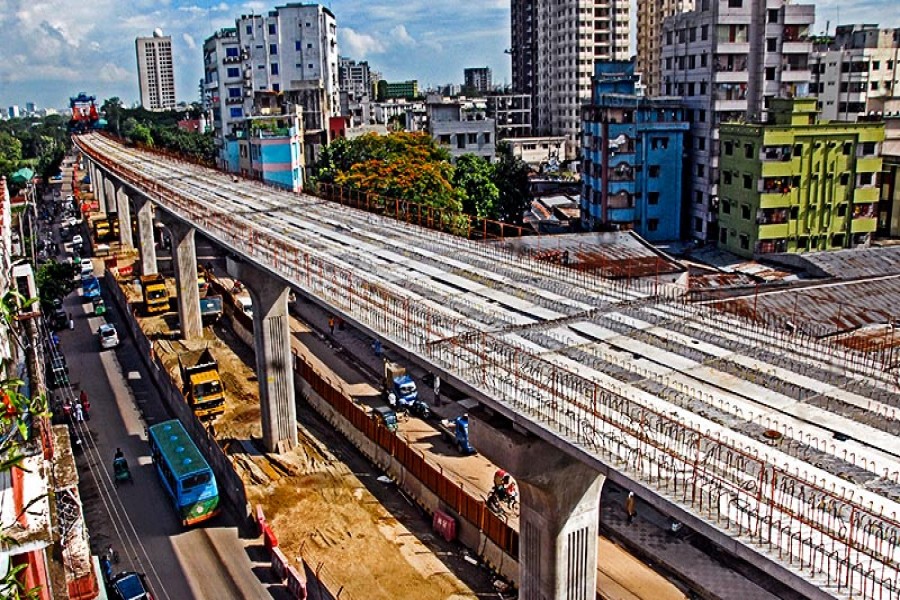As the capital city finds itself amid a plethora of development projects, problems compound to deter the good sides of many. The latest issue centres around the Uttara-Motijheel Mass Rapid Transit (MRT) metro rail project that is being constructed at below internationally accepted heights. This is likely to block solutions to other modes of transport. A front page item in this paper on February 17 last brought the issue to the fore: as the MRT metro rail does not need any ascending or descending ramps, its height should be consistent with world standard so that scope for roads and flyovers which would need these ramps is kept open. Experts on the subject have come out criticising the MRT height choice, although the bureaucracy inside the project seems to be confident of their chosen path, turning a deaf ear to the important pointer. Indeed, the said FE report mentioned that chances of construction of future flyovers may have been spoiled by the preferred height of the MRT project.
Apart from such defects, the slow pace of construction is also making Dhaka's air quality unbearably low, possibly one of the worst in the world. Besides the health hazards, constriction of economic life through impediments created on the path of trade and commerce is being huge. There has hardly been a study on this by the project people. Before the MRT came into the construction phase, the Maghbazar-Maouchak-Shantinagar flyover created another saga by construction on the wrong side of driving -- this was later corrected through patchwork. These doubled the time taken and increased the total cost of the project. All businesses under the flyover appear to have tapered off, or at least been pushed into hibernation. The construction of big government offices on land kept for road expansion around the airport road has been another sore-point for the citizens. They may virtually shut off the path to smooth entry to the city to a large extent. Visibility of development work is important but ultimate good is the main thing. Everybody seems to be in a hurry. Environment, economics, business, health issues, all appear to have a secondary place.
Coming back to the MRT metro rail, immediate steps must be taken to rectify its height problem, if there be any opportunity for this. The case of raising the height at the Farmgate junction to allow an expressway to build a ramp proves that given the will, and the budget to do so, corrections can still be made wherever possible. An example has been set by the involvement of the Prime Minister in matters of two crossings at Purabchal satellite town. If the Prime Minister has had to be involved in all matters, what the bureaucrats and the technocrats are doing may be the question to be asked. In other cases, courts have been dragged in to resolving that which are usually developmental and environmental issues. All these point to a disorganised and uncoordinated state of affairs among the planners. They must be able to see beyond the present and broaden the vision well into the future. This brings us to the basic question of professionalism of the people in charge of important projects and undertakings. The government needs to have a clear and prudent mind to coordinate all projects in the best interest of all. The country is in the cusp of a substantial transformation; all concerned must live up to the challenge.


